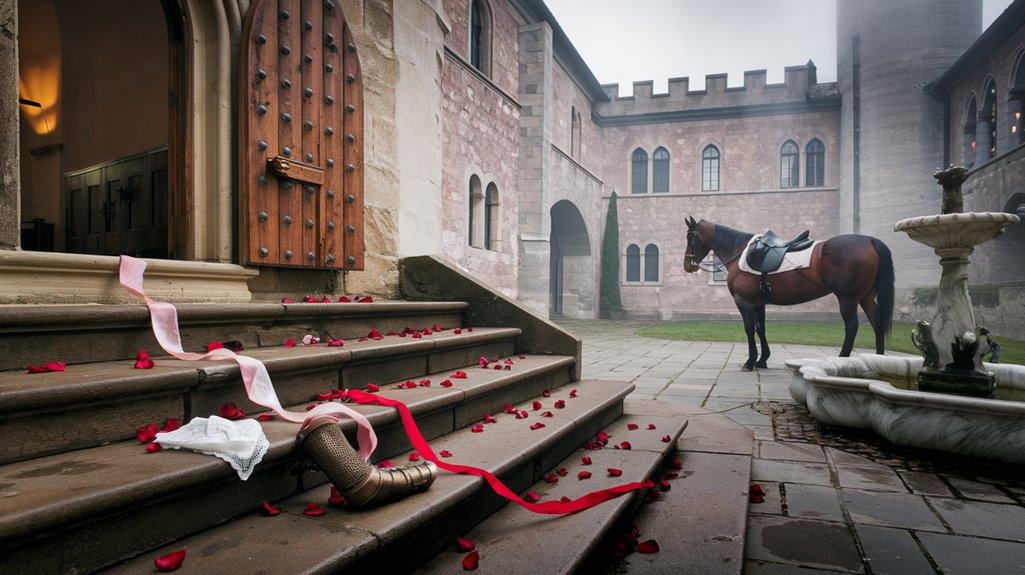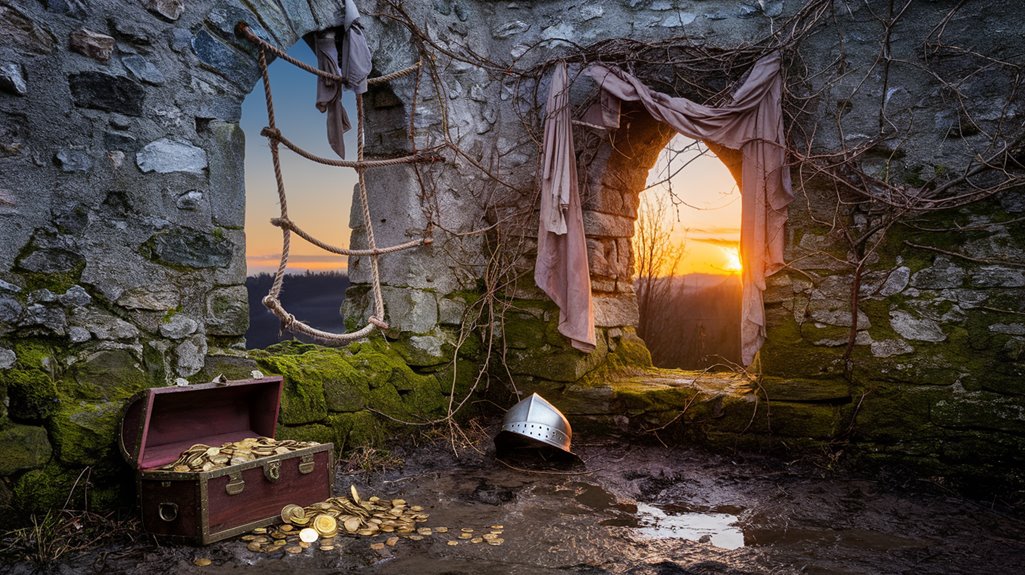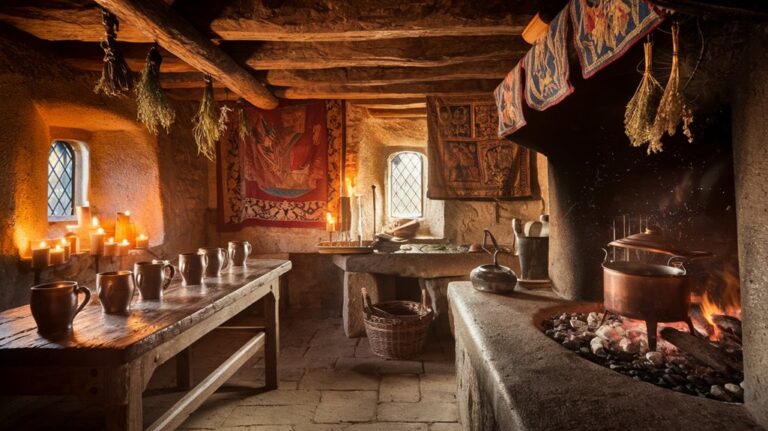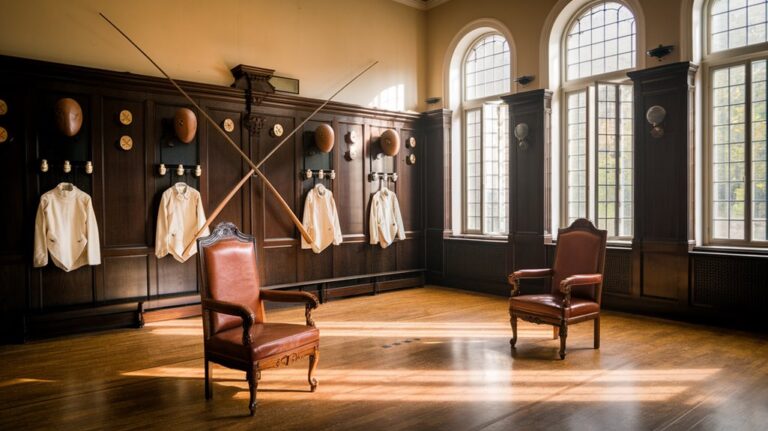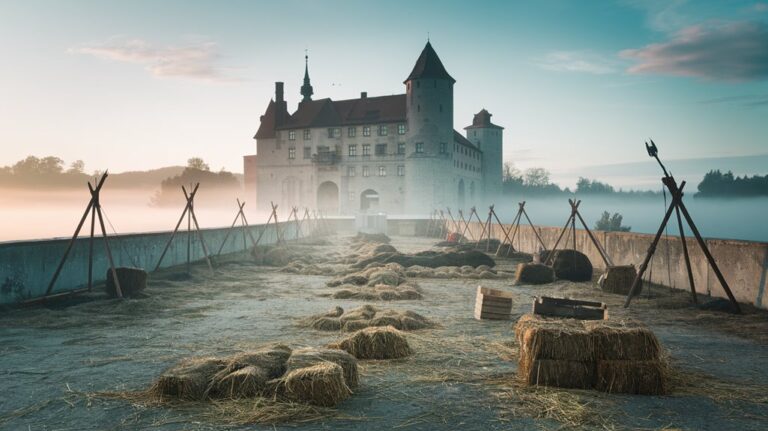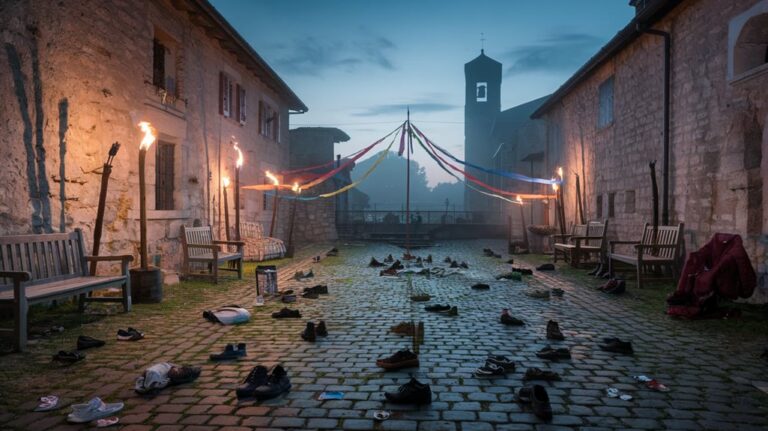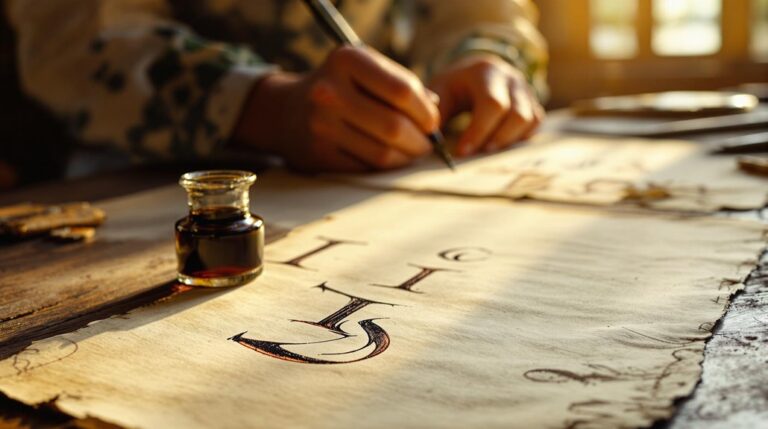Medieval Knights vs. Damsels: Did “Rescues” Really Happen?
You've probably seen countless movies and read stories about valiant knights charging in to save helpless maidens from towers or dragons. While these romantic tales have captured imaginations for centuries, they don't quite match up with historical reality. The truth about medieval women's safety and knightly conduct tells a far different story – one that might surprise you. Let's separate the shining armor from the rust and discover what really happened when medieval damsels faced danger.
The Myth Behind Medieval Damsel Rescues
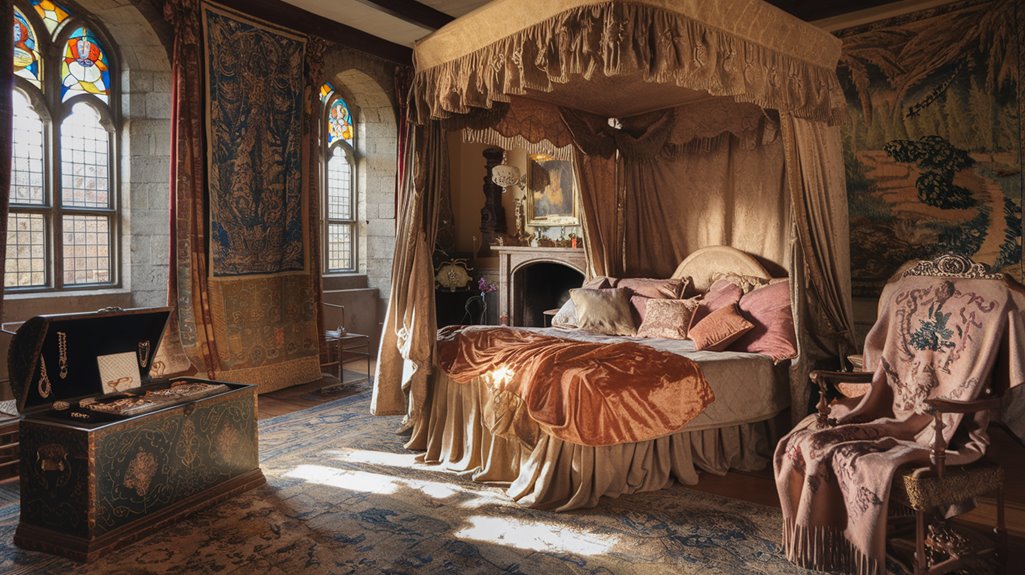
While medieval literature paints a romantic picture of knights gallantly rescuing damsels in distress, historical records tell a markedly different story.
You'll find that mythical narratives of heroic interventions rarely matched reality, as most kidnapping cases were resolved through legal channels or negotiations rather than dramatic rescues. In fact, research by Daven Hiskey confirms the scarcity of documented rescue stories.
These societal perceptions of chivalrous knights swooping in to save vulnerable women have persisted for centuries, yet court documents reveal a darker truth. Wealthy widows were particularly vulnerable to these crimes.
Noble women were frequently targeted for abduction and forced marriages, with little hope of knightly intervention.
When you examine cases like those of Joan Coggeshale and Alice de Lacy, you'll see that justice often proved elusive, especially for victims from lower social classes.
The romantic ideal of chivalry served more as a facade, masking the harsh realities women faced in medieval times.
Historical Evidence vs. Literary Fantasy
The stark contrast between historical evidence and literary accounts of medieval rescues highlights a fundamental misalignment in our understanding of chivalric culture.
When you examine court records and historical documentation, you'll find that most kidnapping cases were resolved through legal channels or negotiations, not heroic interventions.
While chivalric ideals painted a romantic picture of knights rushing to save damsels in distress, historical accuracy tells a different story.
You won't find many documented cases of successful rescues. Instead, you'll discover that the legal system often failed victims, especially women from lower social classes.
Chronicles like Froissart's reveal that knights frequently didn't intervene in abductions.
The reality is that medieval society's treatment of women was far more complex and problematic than the idealized tales would have you believe.
Real Dangers Faced by Medieval Women
Medieval women faced brutal physical dangers that extended far beyond literary stereotypes of damsels in distress. Archaeological evidence reveals that women aged 17-25 suffered cranial, rib, and jaw injuries from physical violence, while court records document widespread sexual assault and exploitation.
You'll find that women living away from home, particularly in service roles, were especially vulnerable. Both male and female perpetrators were given equal fines for violent misbehavior in town courts. The understanding of manners and proper conduct emerged from French influences in the 13th century, shaping how violence was viewed and punished.
Beyond direct physical violence, you'd encounter crushing societal constraints that made daily life perilous. Women's extensive workload – combining domestic tasks, animal care, and manual labor – led to severe physical trauma and exhaustion.
You couldn't escape the legal system's bias either, as women held subordinate status and limited access to justice. While knights weren't riding to anyone's rescue, medieval women faced very real threats from both interpersonal violence and systemic oppression.
What Court Records Tell Us About Kidnappings
Court records from 1100 to 1500 reveal a complex picture of medieval kidnappings, with over 1,200 documented "ravishment" cases blurring the lines between abduction and rape.
Historical analysis shows that only 9% of these cases would be classified as rape by today's standards.
You'll find that court records tell a surprising story: many "abductions" were actually consensual elopements, where women sought escape from arranged marriages or abusive situations.
The legal term "raptus" covered various scenarios, from politically motivated kidnappings to family interventions.
Economic factors often drove these incidents, particularly when inheritance rights were at stake.
After a significant 1285 statute was passed, wives involved in adultery cases were more frequently prosecuted through public abduction charges.
Legal documents weren't always truthful accounts – they frequently masked complex situations and emotional responses.
Most cases ended in out-of-court settlements, with few resulting in actual convictions.
Research shows that clerical defendants appeared frequently in these cases, possibly reflecting community disapproval of their behavior.
The True Purpose of Chivalric Tales
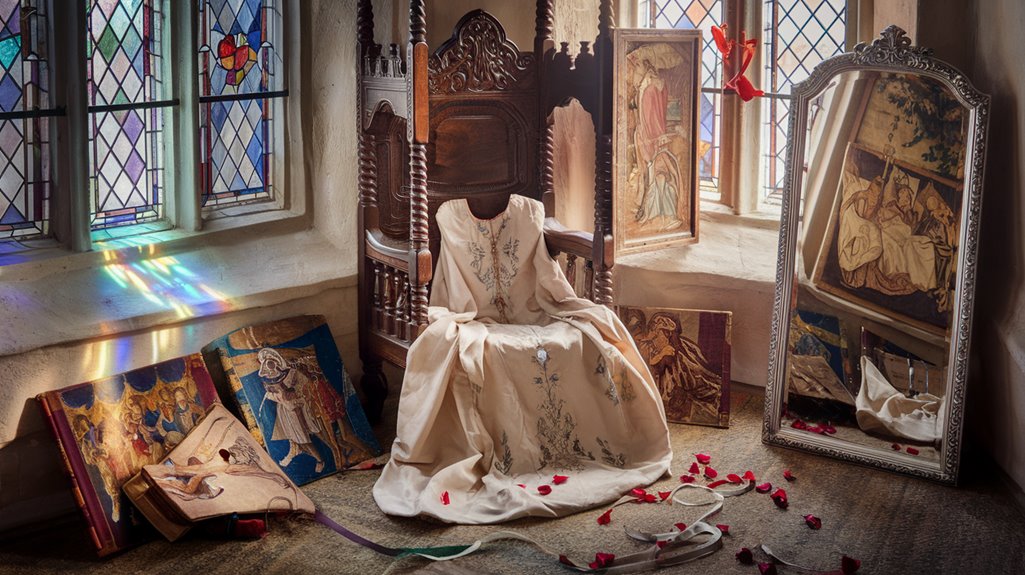
While modern readers might view chivalric tales as mere entertainment, these stories served a deeper purpose in medieval society as powerful tools for social commentary and moral instruction.
The Matter of France legends and other chivalric works provided medieval audiences with compelling role models of virtue and nobility.
You'll find that these narratives skillfully contrasted idealized knightly behavior with the harsh realities of medieval life, highlighting societal shortcomings and failures.
 changing warfare tactics contributed significantly to the diminishing role of knights in society.
changing warfare tactics contributed significantly to the diminishing role of knights in society.
The romantic tales of chivalric literature served primarily as idealized entertainment, promoting courtly values and social hierarchies. They weren't reflections of actual medieval life, where women exercised agency in various community roles beyond the damsel stereotype.

